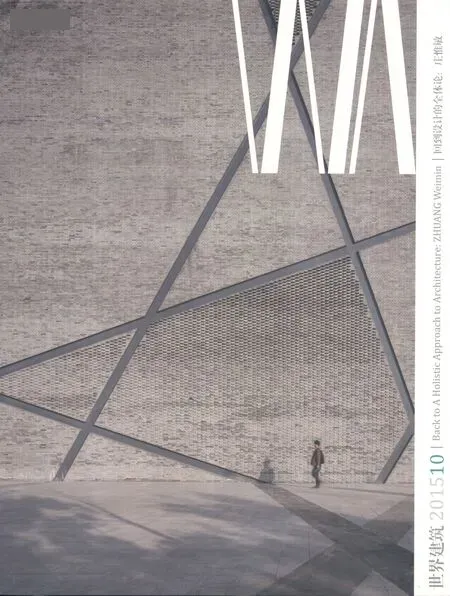国家电网公司电力科技馆,北京,中国
国家电网公司电力科技馆,北京,中国
Electric Power Museum of the State Grid Corporation of China (SGCC), Beijing, China, 2015
该项目为新建市政基础设施及公共建筑工程,建设地点位于北京市西城区。用地西侧临菜市口大街,南侧临珠朝街,东侧为代征城市规划路,北侧为文物保护建筑中山会馆。可建设用地面积7478.57m2。规划控制建筑高度60m(总高度)。北侧距用地边线30m范围内为文保建控区,建构筑物控高5m。项目包括220KV变电站主厂房及电力科技馆两部分内容。其中地下3~5层为变电站主厂房,地下二层以上为科技馆及电力客服中心办公用房。
变电站与科技馆整体设计原则
该项目是2009年市政府重点工程中煤改电工程的主要站点,为北京旧城内居民集中供暖的燃煤锅炉更换为蓄热式电锅炉提供支持。通过该工程可在采暖季压减燃煤,减少CO2、SO2,氮氧化物的排放。通过清洁能源集中供暖,有效积极改善北京旧城冬季的空气质量。
该项目是我国第一个对外开放可供参观的220KV运行变电站,也是北京电力科技馆最重要的展示厅之一。在设计前期,建筑师进行了大量的调查研究工作和详细的建筑策划,最终确定根据“科技与科普、地上与地下、建筑外观与展示内容、固定展示与定期更新相结合”的设计原则,本设施工程将科技馆与变电站作为一个整体进行设计。该项目是市政商业地块混合利用的典型案例,为我国新常态下城市用地存量的优化开发提供了新思路。该项目也是工业建筑和民用建筑规范双重应用的典型案例,是北京第一个在地下220KV运行变电站上整体建设的高层建筑,为后续城市用地存量优化积累了宝贵的技术经验。
尊重古城城市空间序列设计原则
该项目建设用地为北宽南窄斜梯形,北侧用地红线外为文物保护建筑中山会馆,规划要求有30m建控区。总平面布局充分考虑用地北侧文物建筑的空间尺度。设计将12层主体建筑布置在用地南侧,沿菜市口大街以简洁、大尺度的入口空间为主;北侧布置6层裙房,建控区内以绿化停车为主,结合部分室外出入口及通风井等低矮构筑物保持舒展、低矮的老城尺度空间,成为南北区域的过渡空间。建筑由若干小体块组合而成,此举消解了对城市历史街区的视觉压迫,同时形成了丰富的建筑表情。
建筑表皮设计体现城市历史记忆与现代科技交融的设计原则
建筑表皮设计致力于体现建筑与城市发展的关系,在材料的使用上采用具有历史感的石材与现代节能玻璃幕墙相结合的处理手法,不同材料交融砌筑,应对周边城市环境肌理。淡雅的洞石、深邃的啡钻花岗岩主要用在菜市口大街界面,电力科技馆在城市其他高层现代建筑群中显得分外优雅。石材幕墙表皮开洞设计暗合中国传统纹样神韵,是4.2m×4.2m的标准板块,在工厂实现预拼装后再运抵施工现场进行整体挂装。Low-e玻璃外墙和晶莹剔透的双钢化夹胶超白玻璃,和历史街区相呼应,让建筑反射天光云影和胡同院落,给人以平面胡同院落延伸生长到立面的视觉感受。□
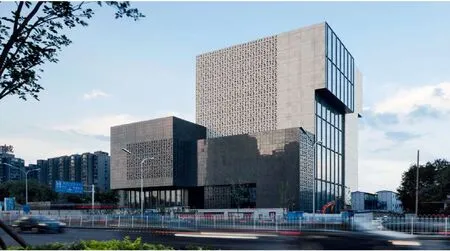
1 外景/Exterior view
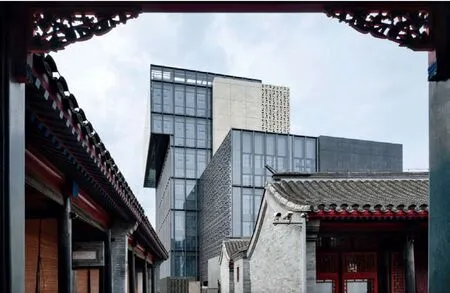
2 外景/Exterior view
项目信息/Credits and Data
项目负责人/Principal in Charge: 庄惟敏/ZHUANG Weimin设计团队/Design Team: 庄惟敏,张维,杜爽等/ZHUANG Weimin, ZHANG Wei, DU Shuang, et al.
合作/Collaborators: 北京市电力设计院/Beijing Power Design Institute
场地面积/Site Area: 7502.90m2
总建筑面积/Total Floor Area: 47,767.75m2(地上/Aboveground: 24,880.80m2,地下/Underground: 22,886.95m2)
建筑高度/Height: 60m
设计时间/Design Period: 2009-2011
竣工时间/Completion: 2015.12
摄影/Photos: 姚力/YAO Li

3 总平面/Site plan

4 外景/Exterior view
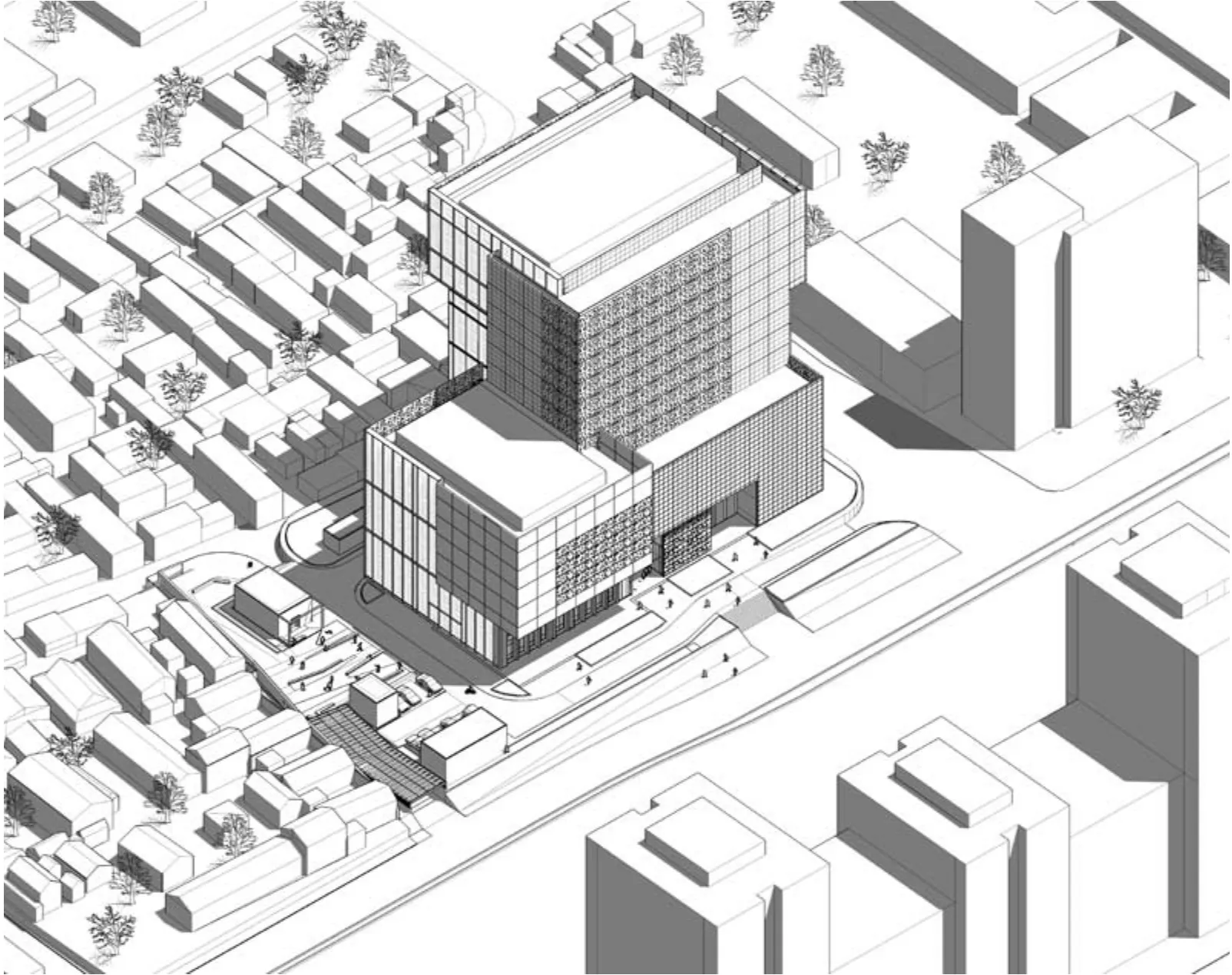
5 鸟瞰图/Aerial view perspective

6 草图/Sketch
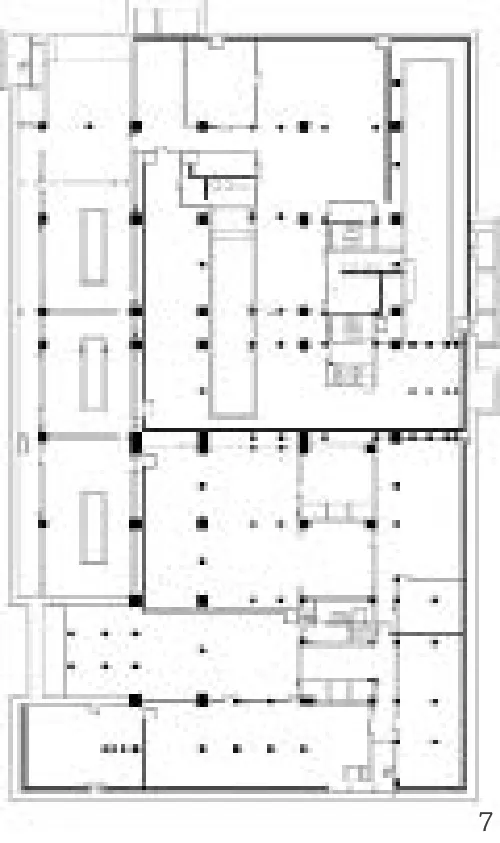
7 地下五层平面/Floor -5 plan

8 地下四层平面/Floor -4 plan

9 地下三层平面/Floor -3 plan
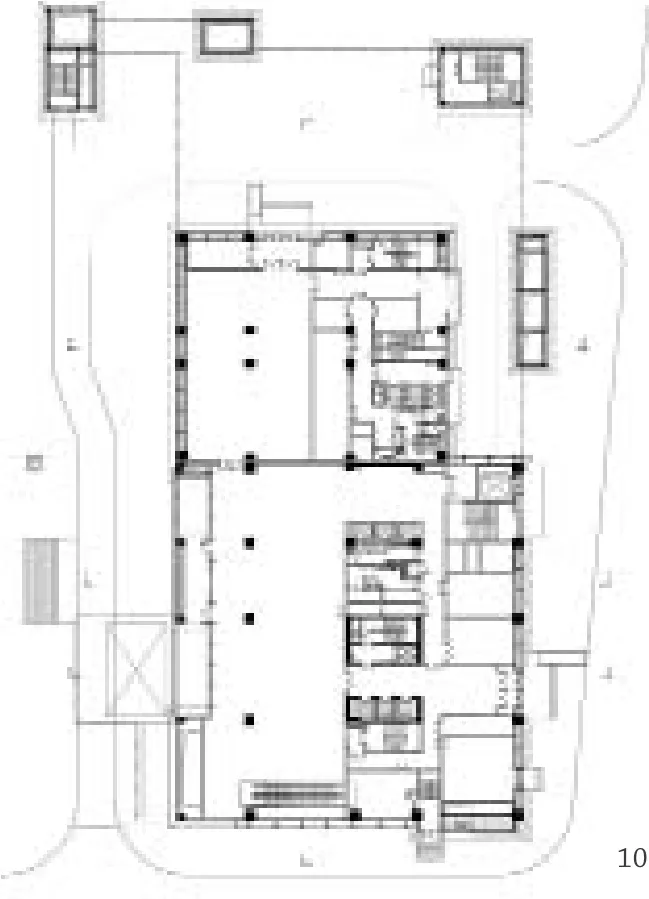
10 首层平面/Floor 0 plan
Located in Xicheng Dis., Beijing, this project is a newly-built civil infrastructure and a public building. the site is to the east of Caishikou Rd., to the north of Zhuchao Rd., to the west of a planning road, and to the south of Zhongshan Guild Hall, which is protected as a cultural heritage. the parcel area is 7478.57m2, with a maximum gross height of the building restricted to 60m, except for the area within the range of 30m from Zhongshan Guild Hall, where no permanent construction shall exceed 5m. the project consists of two parts, part one is a 220KV transformer substation on basement level 3-5, on top of which is part two, a science museum and the customer service center.
Integration of the transformer substation and the museum
the project was a major transformer substation for Beijing 2009 "Coal to Electricity" project, one of the most important engineering projects of Beijing municipal government aimed at replacing collective coal burning boilers with regenerative electric boilers. this "Coal to Electricity" project is expected to cut down coal heating consumption in winter and reduce emission of CO2, SO2and nitrogen oxide. As a result, air quality in urban Beijing would be improved due to the enlarged collective use of clean energy.
The project is the first 220KV transformer substation in China that has a visitor's route open to the public. It is also one of the most important exhibition space in Beijing Electricity Science and Technology Museum. In the beginning of design process, the architect conducted massive surveys and made detailed programming plan. Eventually, a comprehensive design was proposed which put the museum and the transformer substation together as a whole, based on the concept of combinations of "science and technology and its popularization", "above and beneath the ground", "cladding and exhibition" and "permanent and renewable display". the SGCC Museum is a pioneer example of mixed use of infrastructure and commercial land, which provides new approach to optimize urban land storage in the New Normal time. In addition, it is a typical example of double application of both industrial and civil building code in China. It is also the first high-rise public building located above an underground 220KV transformer substation in Beijing. In conclusion, it provides a pioneer technical experience to deal with urban land storage problems.
Respect for space pattern of ancient Beijing city
The SGCC Museum's site is trapezoid in shape, of which the north side is wider than the south. To the north of the site lies Zhongshan Guild Hall, which is protected as a cultural heritage. Within the range of 30m from Zhongshan Guild Hall is the construction-restricted area. The master plan takes into consideration of the cultural heritage building and set the 12-floor main building on the south part of the side so as to make more space for it. Along Caishikou Rd., the exterior of the building is simple to show a large-scale entrance space. On the north part of the site there is a 6-floor podium building. To the north of the podium building is the constructionrestricted area. In this area there are outdoor facilities such as green space, parking lots, entrances and exits, ventilation shafts, etc. These low rise constructions keep the pattern of ancient Beijing city's urban fabric and serve as a buffer zone between the SGCC Museum and Zhongshan Guild Hall. Moreover, the SGCC Museum consists of several small volumes, which dispel the visual tension of the huge building and enrich the shape of the building.
Building envelop that reflects city history and modern technology
The design of building envelop aims at reflecting the relationship between architecture and urban development. In terms of material, stately stone, which provides a sense of history, is used in combination with modern glass curtain wall, which represents contemporary technology. This combination of materials responds to the complicated self-growing surrounding urban fabric. The simple and elegant travertine and deep and stately Baltic brown are mainly used on west facade in order to make the museum elegantly stands out from surrounding modern high-rise buildings. The stone curtain wall, with the pattern of openings on the wall reflecting traditional Chinese decorative pattern, has a standard 4.2m wide and 4.2m tall unit and is installed on site after pre- fabrication in factory. Low-E glass and double layered tempered and laminated super white glass respond to historic urban area and reflect sky and Hutong view, which provides a sense that the Hutong grows from ground to the building's facade.□

11 二层平面/Floor 1 plan
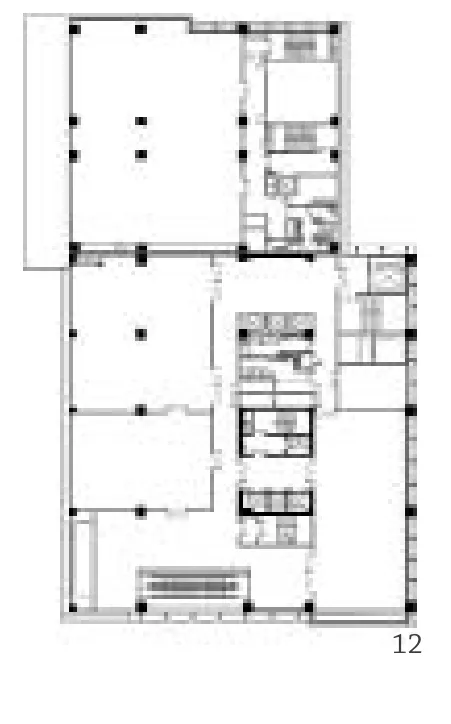
12 三层平面/Floor 2 plan

13 四层平面/Floor 3 plan

14 五层平面/Floor 4 plan
评论
邵韦平:城市织补与开放
相对于业已成熟的建筑类型,国家电网公司电力科技馆项目是在北京市“煤改电”这样特定技术与社会背景下产生的“跨界建筑”。项目位于北京南城老区——《城南旧事》故事发生地,基地周边正在进行大规模城市更新,高层住宅和商业建筑环绕,基地西侧紧邻菜市口大街,北面是一座文化保护建筑“中山会所”。项目在严谨的建筑策划支撑下进行了功能整合与空间拓展的尝试,将220KV变电站主厂房与电力科技馆两项内容结合起来,将“闲人免进的禁地”通过建筑语言巧妙地转变成“科普课堂”。厂房与科技馆在空间上是共有的,但同时也是各自自成体系的。原本内向的空间特性在跨行业技术的支撑下得到了最大限度的开放,建筑可能性得到了拓展。高层建筑主体空间面向4个方向出挑并敞开,既有环境与新建建筑在视觉上产生互动。出挑部分的底面采用高反射材料,将古老的城市环境融合到新建建筑中。建筑一方面完整地向公众呈现出特定历史时期的城市功能形态;另一方面在满足技术条件的基础上,建筑师通过尺度的控制、空间组合与立面材料的搭配保证了新建筑与老城区文化肌理的融合与再生。国家电网公司电力科技馆项目的策划与实施过程为可持续发展背景下城市用地存量优化开发提供了新思路,是城市基础设施和公共建筑土地混合共享应用的典型案例,是在地下变电站上整体建设的高层建筑。
Comments
SHAO Weiping: Urban patching and openness
Compared to mature building types, the Electric Power Museum of the State Grid Corporation of China (SGCC) can be considered as a "trans-boundary" project. Located in the old district of south Beijing – where My Memories of Old Beijing took place, the site's surrounding area is experiencing large-scale urban renovation, with rapid growth of high-rise residential and commercial blocks. To its west is the Caishikou Street, and to its north a cultural-conservation building, the Zhongshan Club. Under strict architectural programming, the project made attempts at functional integration and spatial expansion, combining the 220KV substation powerhouse with the museum and deftly transforming a "staff-only" restricted area into a popular science classroom through architectural vocabulary. the powerhouse and the museum share the same space, while each maintaining its own system. Supported by trans-boundary technology, the originally introvert space achieved utmost openness, thus its architectural potential is considerably expanded. the main space of the high-rise building is open to all four directions, creating visual interactions between the new building and the existing environment. The undersides of the projecting parts employ high-reflective material to fuse the new building with old urban setting. On the one hand, the project presents its urban function as a whole to the public; on the other hand, having fulfilled technical requirements, the architect guaranteed both the new building's integration with the old city's cultural texture and their regeneration by means of scale control, spatial composition and disposition of facade materials. the SGCC Electric Power Museum's programming and implementation explored new ways of thinking for the optimization of urban land stock in the context of sustainable development. It is a typical case of joint application of urban infrastructure and public construction land, as well as an integrated design of high-rise buildings above the substation. (English translation by LIU Chen)
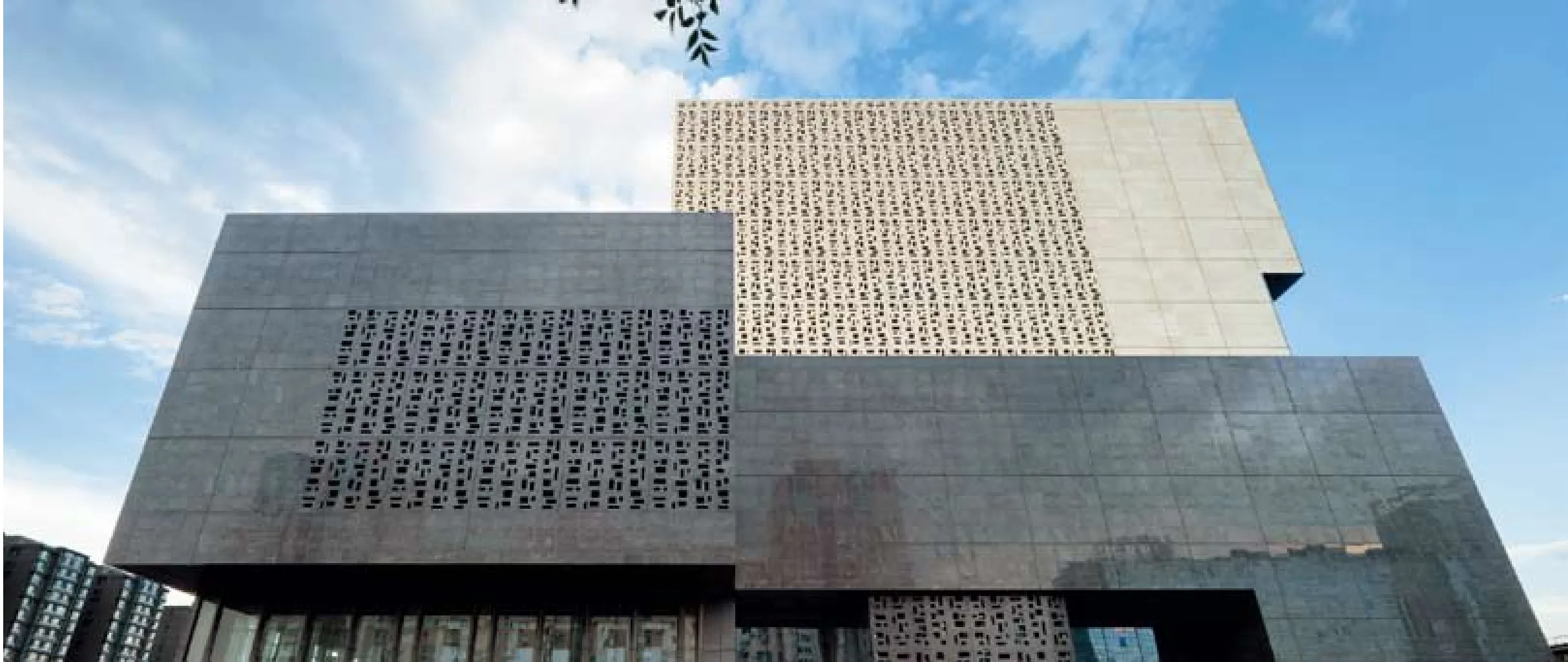
15 外景/Exterior view

16.17 幕墙详图/Detail of curtain wall
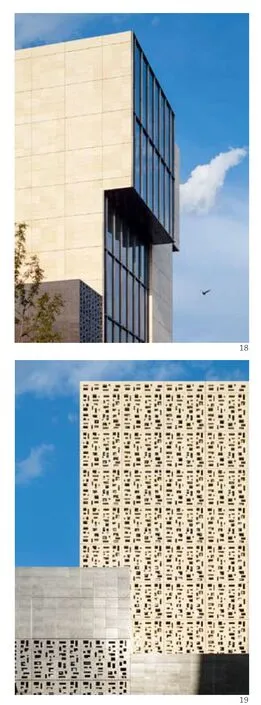
18.19 立面细部/Façade detail
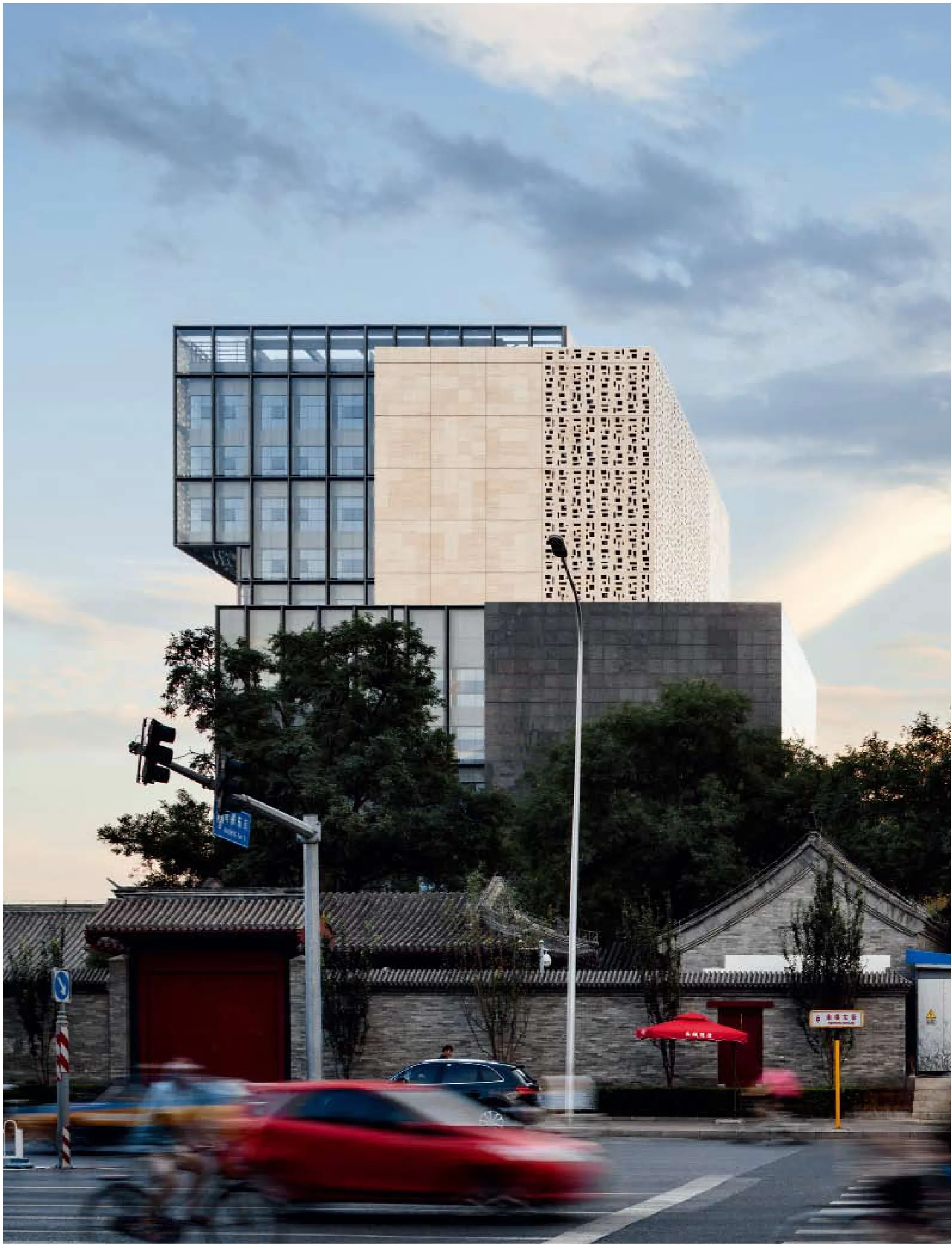
20 外景/Exterior view

